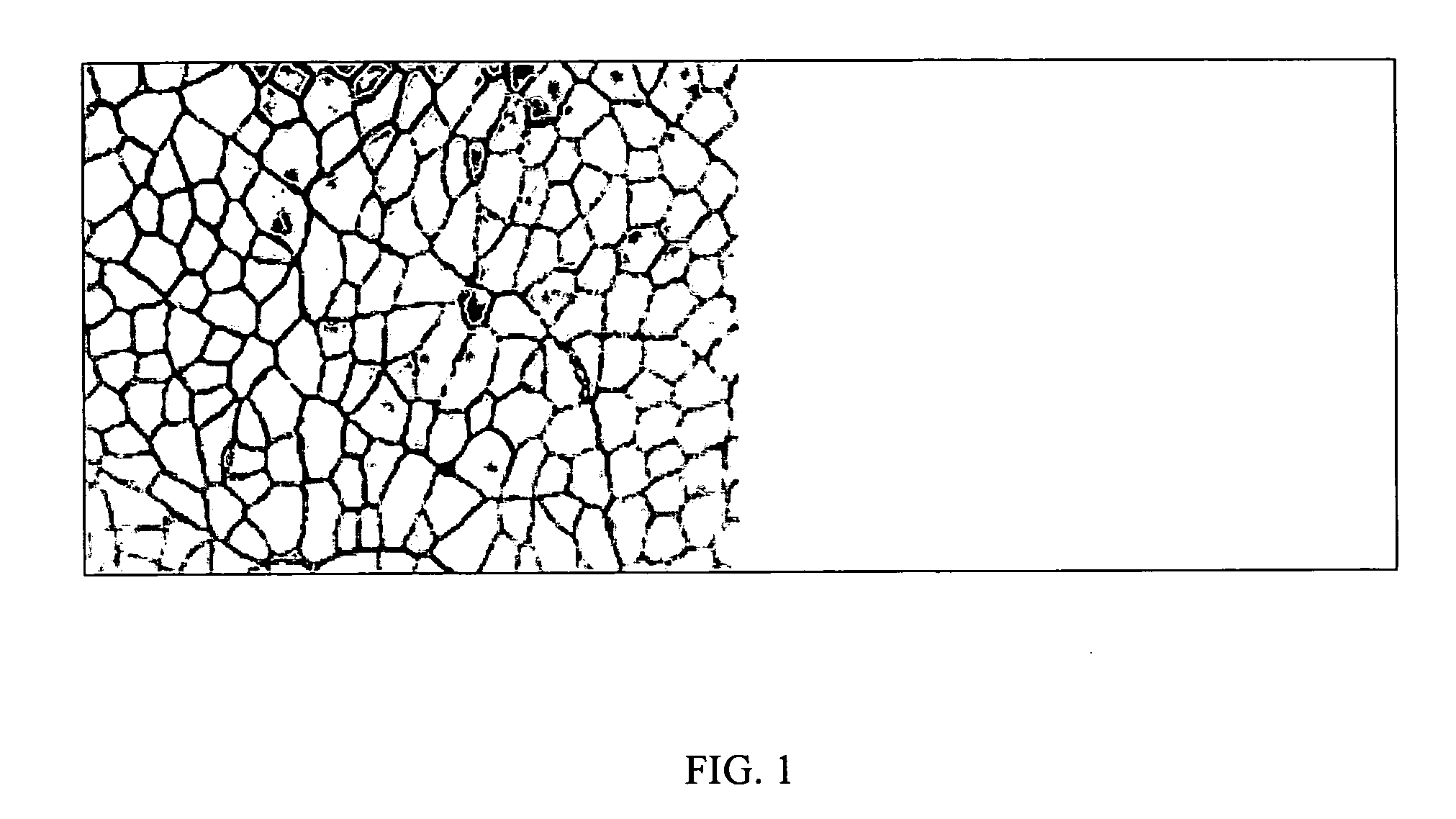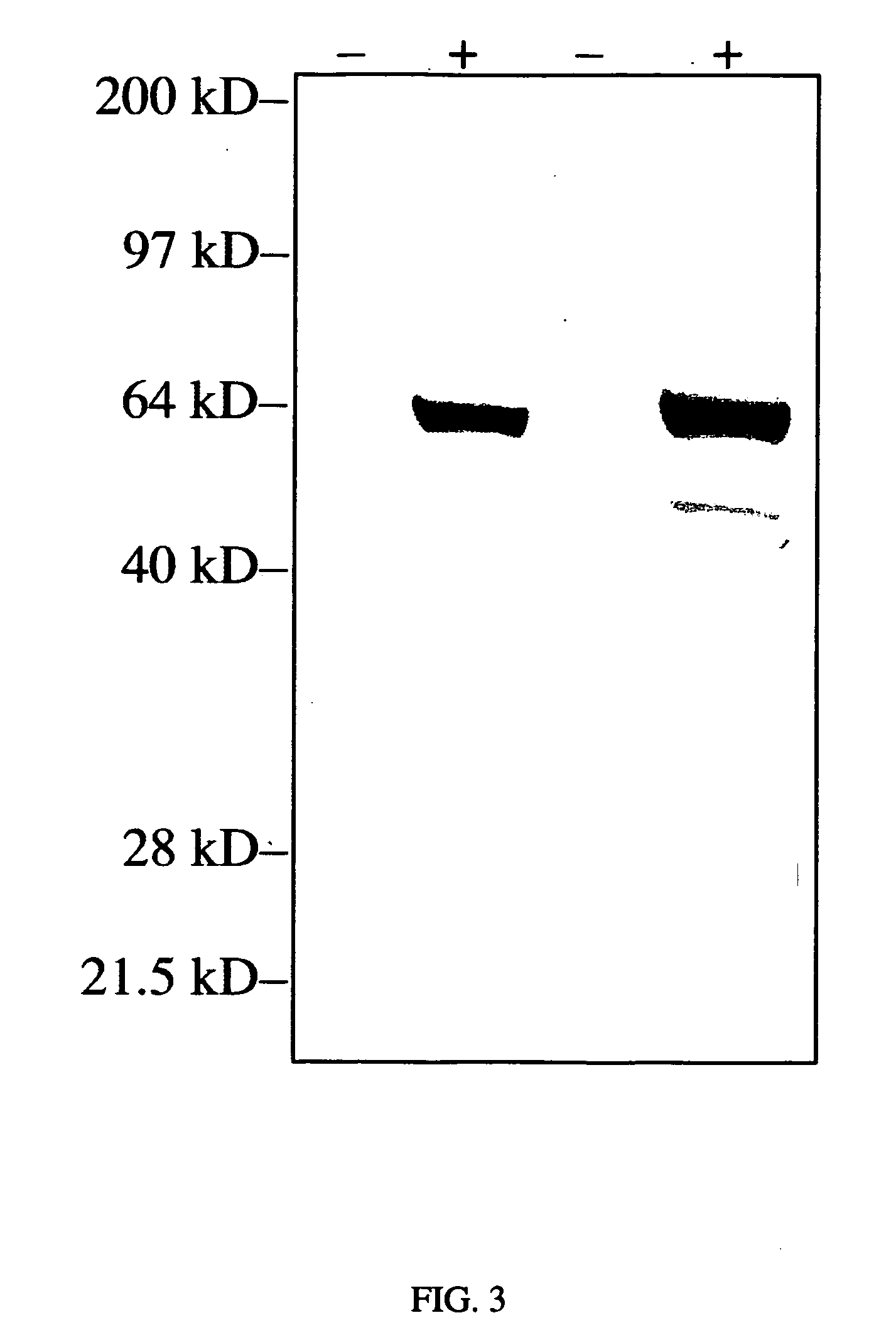Methods for genetic immunization
a technology of immunization and genetics, applied in the field of genetic immunization, can solve the problems of difficult to obtain sufficient agent material for immunization, and inability to carry out large-scale immunization, etc., to achieve increased permeability of tissue vasculature, increased vessel permeability to nucleic acid, and increased permeability of the vasculature
- Summary
- Abstract
- Description
- Claims
- Application Information
AI Technical Summary
Benefits of technology
Problems solved by technology
Method used
Image
Examples
example 1
Hydrodynamic Tail Vein (HTV) Delivery.
[0073] Hydrodynamic intravascular injection has been shown to be a reliable and efficient method of functionally delivering polynucleotides to a broad distribution of cells in vivo, U.S. Pat. No. 6,265,387 (incorporated herein by reference). Hydrodynamic tail vein injection is described in U.S. Pat. No. 6,627,616 (incorporated herein by reference). For hydrodynamic tail vein delivery in mouse, plasmid DNA was diluted in an injection solution volume equal to 1 ml per 10 grams body weight and injected into the lateral tail vein in 6 to 7 seconds. The maximum volume delivered was capped at 3.0 ml (mice ≧30 gram body weight). A similar procedure was used for hydrodynamic tail vein delivery in rats, with a delivery time of 18-22 seconds and a maximum volume of 20 ml (rats ≧200 g).
example 2
Hydrodynamic Limb Vein (HLV) Delivery.
[0074] Intravenous pDNA injection into veins of limbs temporarily isolated by a tourniquet resulted in very high gene transfer to skeletal muscle cells. This hydrodynamic limb vein procedure is readily applied in small rodents (mouse, rat and rabbit) and larger mammals (dog and primate) with similar transfection efficiencies. For immunizations, six-week old ICR mice (˜20 g), six-to-seven week old (˜125 g) Sprague-Dawley rats and two-month old (˜2.2 kg) New Zealand White rabbits were used. Hydrodynamic limb vein gene delivery was performed as described in US-2004-0242528(incorporated herein by reference). Hydrodynamic arterial injection for delivery to limb skeletal muscle can also be performed as described in U.S. patent application No. 09 / 707,000 (incorporated herein by reference). For the following examples, a tourniquet was wrapped around the upper hind limb just above the quadriceps and tightened into place with a hemostat to block blood f...
example 3
Genetic Immunization by Hydrodynamic Tail Vein Plasmid DNA Delivery.
A. Mice:
[0076] 1) Luciferase Antigen. Mice were injected 5 times via HVT injection with 50 μg pCI-Luc (delivered on days 0, 14, 21, 28 and 35). Sera were collected on day 35 and 42 and assayed for anti-luciferase Ab by ELISA. On day 35, the average level of anti-luciferase Abs in HTV immunized mice was 334.3 ±122.2 μg / ml (5 mice). Antibody levels approximately doubled by day 42. All 5 mice exhibited an immune response as determined by antigen-specific antibody production.
[0077] 2) Human dystrophin. An anti-human dystrophin antibody was generated in ICR mice by hydrodynamic tail vein genetic immunization. The mice were primed and boosted by hydrodynamic tail vein delivery of 100 μg of a human dystrophin expression cassette (two boosts at 2 and 3 weeks after the prime). Sera were obtained 3 days after the second boost and used to stain for human dystrophin expression in mdx (dystrophin deficient) mice previously ...
PUM
| Property | Measurement | Unit |
|---|---|---|
| Time | aaaaa | aaaaa |
| Time | aaaaa | aaaaa |
| Time | aaaaa | aaaaa |
Abstract
Description
Claims
Application Information
 Login to View More
Login to View More - R&D
- Intellectual Property
- Life Sciences
- Materials
- Tech Scout
- Unparalleled Data Quality
- Higher Quality Content
- 60% Fewer Hallucinations
Browse by: Latest US Patents, China's latest patents, Technical Efficacy Thesaurus, Application Domain, Technology Topic, Popular Technical Reports.
© 2025 PatSnap. All rights reserved.Legal|Privacy policy|Modern Slavery Act Transparency Statement|Sitemap|About US| Contact US: help@patsnap.com



